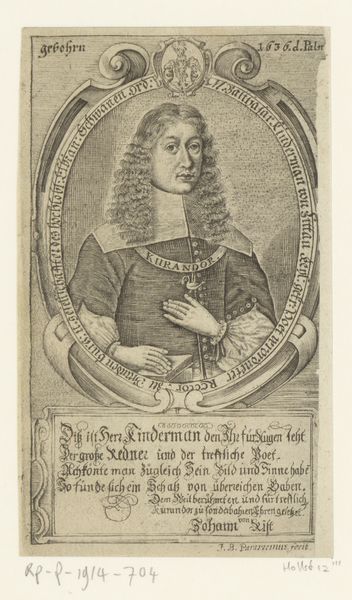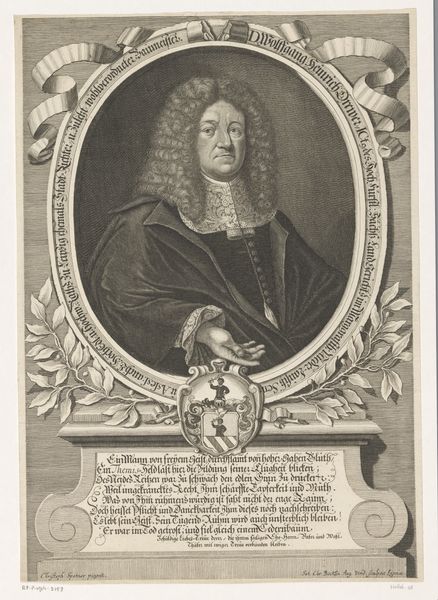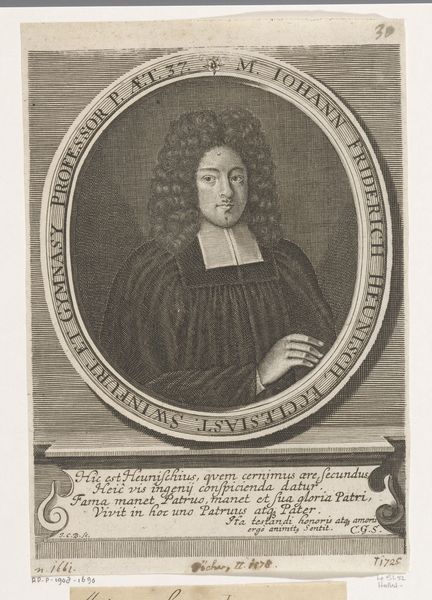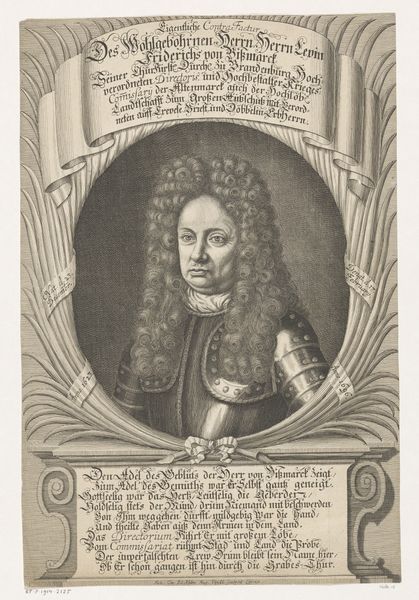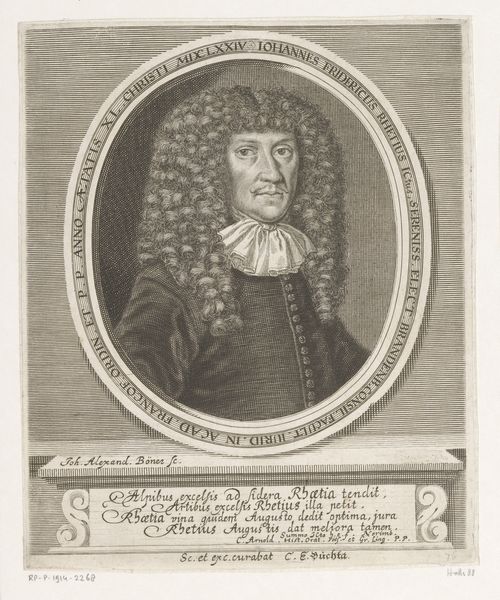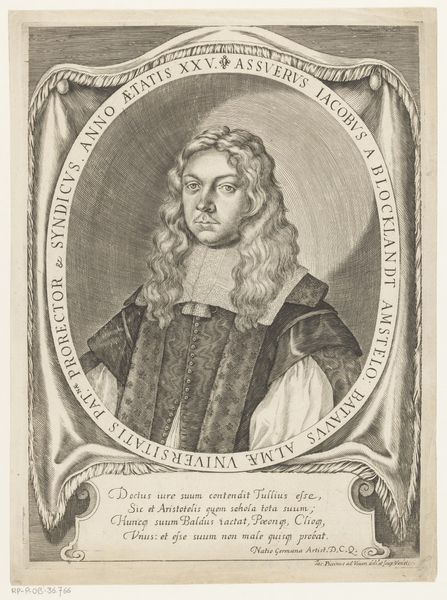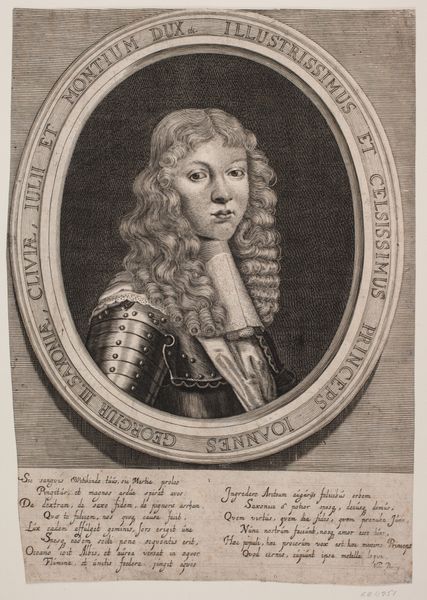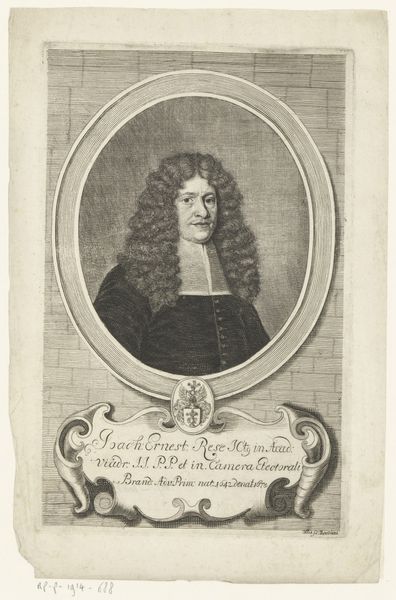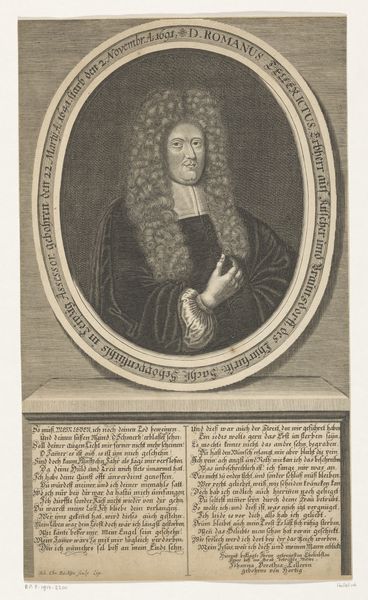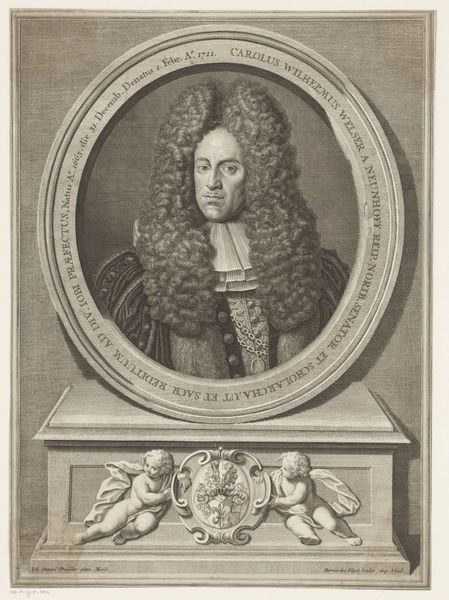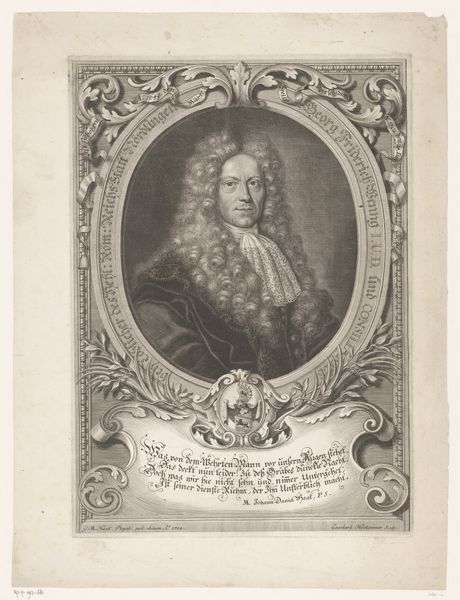
engraving
#
portrait
#
baroque
#
dutch-golden-age
#
engraving
Dimensions: height 150 mm, width 85 mm
Copyright: Rijks Museum: Open Domain
This is Johann-Baptist Paravicini’s 1663 engraving, “Portret van Balthasar Kindermann.” The image is more than a simple likeness; it's a statement about Kindermann's role and status. Engravings like this served a crucial function in 17th-century Europe. They were a primary means of disseminating images and ideas, acting as a form of visual media before photography. Consider the context: the Holy Roman Empire, a patchwork of states with varying degrees of autonomy. Here, religious and political identities were constantly negotiated and asserted. Institutions like the church and the universities played a vital role in shaping public opinion. Note Kindermann's attire and the symbolic objects surrounding him. These aren't arbitrary details. They communicate his profession and social standing within the complex hierarchy of the time. The text framing the image reinforces these messages, further cementing his place in the social order. To fully understand this portrait, we must consider the social conditions and institutional structures that shaped its creation and reception. Resources like period documents, guild records, and religious publications can provide valuable insights into the world of Paravicini and Kindermann.
Comments
No comments
Be the first to comment and join the conversation on the ultimate creative platform.
